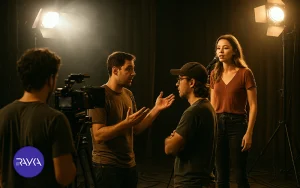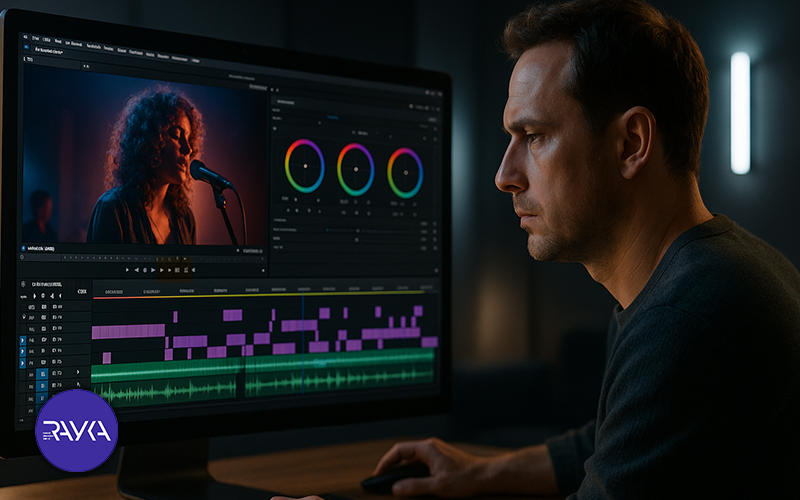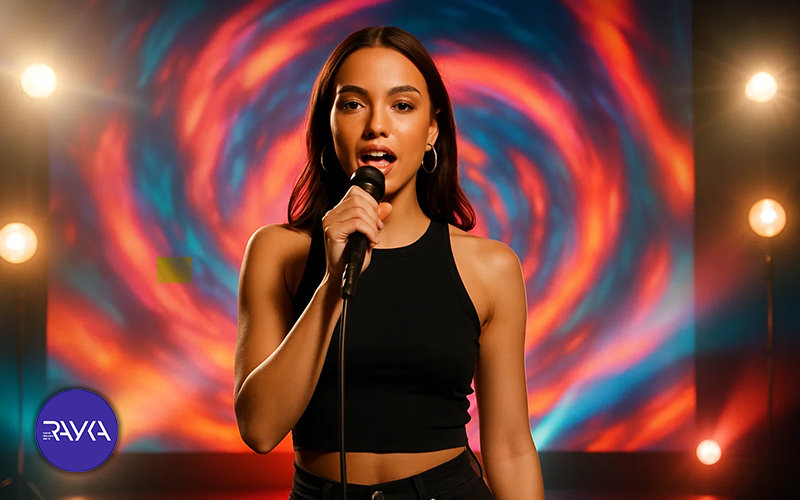
Common mistakes in music video production are one of the main reasons visual projects fail in the music industry. While many artists invest significant time and money into producing videos, overlooking small details can prevent the final product from having the desired impact.
Creating a successful music video requires a combination of creativity, careful planning, and proper execution. If any of these stages are neglected, even the best songs can receive negative feedback.
In this article, we will examine the typical mistakes that occur during music video production, from pre-production to release, and learn how simple preventive measures can help avoid them.
Most errors in music video production begin before filming starts, and ignoring proper planning can affect the entire project.
Pre-production is the most critical stage in creating any music video. The more precise and goal-oriented this phase is, the better the final quality and overall coordination will be. Many directors and emerging artists enter production with only a general idea, which often leads to confusion and serious mistakes.
Below, we examine common mistakes during the pre-production stage of a music video.
Without a clear goal, the video’s narrative becomes chaotic. If the overall concept of the song or its message isn’t defined, the visuals cannot align with the music’s emotion. First, you need to determine what feeling the audience should experience and what should remain in their mind after watching the video.
Not having a storyboard is one of the biggest pre-production mistakes. A storyboard helps the team understand the sequence of scenes, camera angles, and overall mood. Without it, coordination between the cinematographer, director, and editor becomes difficult, resulting in scattered and aimless scenes.
Selecting an inappropriate location can ruin the emotional atmosphere of the music video. For example, an industrial or crowded setting may not suit a heartfelt song. Similarly, the actor or model should match the tone and mood of the music to enhance the video’s believability.
Sometimes directors have great visual ideas, but they don’t align with the rhythm or emotion of the music. This mismatch prevents the audience from fully enjoying the audiovisual experience. From the planning stage, shot design should consider timing and beats to ensure harmony between music and visuals.
Execution errors on set can undermine even the best ideas and significantly reduce the final quality of a music video.
The filming stage is where ideas on paper are brought to life on screen. In this phase, every small decision regarding lighting, camera movement, or angle directly affects the audience’s perception and emotional response. Most visual errors and emotional weaknesses in music videos occur during this stage. Below, we explore the common mistakes made during filming and production.
Improper lighting can destroy the entire mood and atmosphere of a video. Excessive light or harsh shadows diminish the emotional impact of the visuals. Using natural light at the right time of day or soft, controlled studio lighting helps maintain visual balance.
One sign of an unprofessional video is aimless camera movement. Excessive zooms or rapid pans can confuse the viewer and distract from the performance. Every camera movement should be purposeful and synchronized with the music’s rhythm.
Filming without a gimbal or sturdy tripod is one of the most common mistakes. Shaky footage, especially in slow or emotional music videos, creates a sense of instability. Even with basic equipment, applying proper techniques can produce smooth, cinematic visuals.
Choosing a busy location or detailed background can distract viewers from the singer or the video’s story. The background should match the song’s mood and wardrobe, enhancing the subject rather than competing with it.

Poor editing can ruin even the best footage and prevent the audience from emotionally connecting with the video.
Editing is where the story and emotion of a music video take their final form. If scene transitions, color grading, and rhythm are not properly coordinated, the video becomes not only less engaging but also tiring for viewers. Below, we explore the most common mistakes in music video editing.
Many beginner editors use excessive transitions and effects to make their videos more appealing. This not only distracts the audience but also diminishes the cinematic quality of the work. Effects should be used thoughtfully and in harmony with the rhythm.
One of the fundamental mistakes in editing a music video is failing to align cuts with the music’s rhythm. If the visuals lag behind or move ahead of the beat, the connection between auditory and visual experience is lost. Using Cut on Beat is one of the key principles of professional editing.
If different filters or color corrections are applied to each scene, the video loses its visual consistency. Color harmony should be based on the mood of the music (e.g., sad, energetic, or romantic) to create a cohesive visual experience.
Using AI-powered music video tools can help in this stage by automatically harmonizing colors, performing more precise color correction, and producing a professional, unified video.
Abrupt or illogical cuts confuse the audience. Editors should maintain a smooth and natural video flow by using soft cuts, logical transitions, and keeping the rhythm of the music.
If the final output is incorrect in terms of quality, format, or release strategy, all the efforts from previous stages go to waste.
While editing is considered the final stage of production, the release stage determines whether the music video actually reaches the audience. Mistakes in output settings or platform selection can lead to reduced quality or even diminish the original impact of the work. Below, we review the most common mistakes in releasing a music video:
Many creators export their videos in unsuitable formats or resolutions without considering the target platform. For example, a version optimized for YouTube might get cropped or lose quality on Instagram. The output should match the aspect ratio and requirements of each platform.
To reduce file size, heavy compression is sometimes applied, which can blur faces and details. Maintaining a balance between file size and quality is one of the professional practices in releasing a music video.
The accompanying content of a video; such as the title, caption, hashtags, and timing; greatly affects its reach. Releasing a video at the wrong time or without a strategy can prevent even a well-made video from gaining traction.
Nowadays, creating a shortened version of a music video for platforms like Instagram or TikTok is essential. Failing to produce a concise and engaging version can result in losing potential audience.

There are small but important details that are often overlooked and can ruin the overall feel and beauty of a music video.
Sometimes a music video has excellent lighting, editing, and quality, yet it still fails to make an impact. The reason usually lies in these subtle but destructive mistakes that unconsciously affect the audience’s perception. These mistakes include:
Following a few simple yet professional tips can significantly improve the final quality of a music video and prevent common mistakes. We review these tips in the table below:
| Stage | Common Mistake | Prevention Tip |
|---|---|---|
| Pre-Production | Lack of clear goal and storyboard | Set a clear objective and design a detailed storyboard for each scene |
| Shooting | Improper lighting and camera movements | Use controlled lighting and purposeful camera movements |
| Editing | Mismatch with music rhythm and overuse of effects | Align cuts with the beat and use effects sparingly and purposefully |
| Output & Release | Wrong format or resolution | Choose the right format and resolution for each platform and create short versions for social media |
| Visual Details | Incompatible fonts or colors, weak visual harmony between sequences | Match fonts and colors with the music style and maintain visual harmony across scenes |
Artificial intelligence has entered every stage of production as an assistive tool and can reduce many common human errors.
Today, AI technologies help directors and production teams make the music video creation process faster, more precise, and more creative. From automated storyboarding to optimized lighting, rhythm-to-image synchronization, color correction, and intelligent editing, AI can enhance quality at every stage and minimize human mistakes.
Raykamah, with years of experience in content production and leveraging artificial intelligence, delivers fully creative and professional music videos. Using AI technology at various stages of production reduces video creation time and ensures outputs are unique and aligned with current music industry standards.
To collaborate or get advice on creating music videos with AI, please fill out the form below, and the Raykamah team will contact you as soon as possible.
Common mistakes in music video production can negatively impact even the best ideas and songs. However, with careful planning, following best practices in pre-production, shooting, editing, and release, and paying attention to visual details, the quality of a video can be elevated to a professional level.
Using artificial intelligence also helps reduce many human errors and makes the production process faster and more creative. With experience and expertise in this field, Raikamah delivers unique music videos that are fully aligned with current music industry standards.